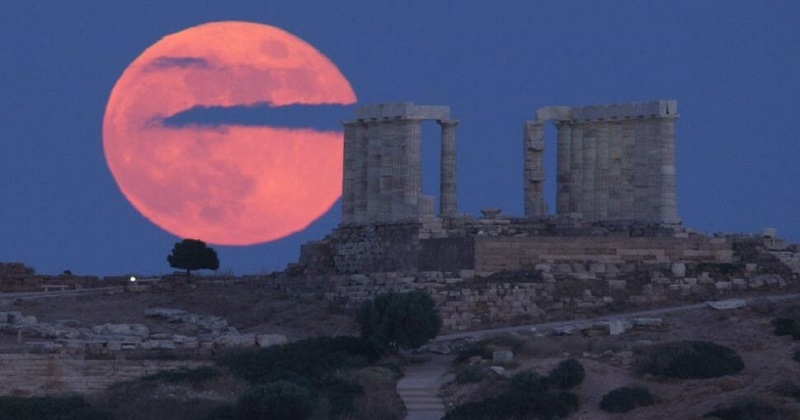
When June’s strawberry full moon shines in the sky tonight, it will be the second of four back-to-back supermoons. The moon will seem up to 17% bigger and 30% brighter than normal during the magnificent lunar spectacle. Although it technically peaks today at 12:51 BST (07:51 EDT), folks in the UK and North America won’t be able to see it until later this evening. While there is no universal definition, a supermoon is a full moon that looks brighter and bigger than ordinary moons due to its near orbit to Earth.
The full moons on July 13 and August 11 are also likely to be classified as supermoons due to total lunar eclipses that turned Earth’s natural satellite into a bright crimson disc in the sky. Some scientists, including NASA, adopt the supermoon definition established by astrologer Richard Nolle in 1979, which classifies it as a full moon that is within 90% of its perigee – the closest point to Earth in its orbit.
However, former NASA scientist Fred Espenak calculates supermoons to account for variations in the lunar orbit throughout each lunar cycle. The full moon in June will be 222,238.4 miles (357,658 km) from our planet as it rises at nightfall, with skywatchers advised to gaze southeast after sunset to witness it creep up over the horizon. Cloud cover should be modest throughout much of England and Wales this evening, while views in Ireland and Scotland may be clouded.
If poor weather obscures your night sky, you can still witness the Strawberry supermoon live online from 20:15 BST via a free Livestream from the Virtual Telescope Project (15:15 EDT). The Royal Observatory in Greenwich is urging people to submit images of the supermoon for a chance to win a ‘great astronomy reward’. ‘The good news is that the Super Strawberry Moon will still look full for a few days around and around 14 June, providing plenty of opportunities to catch that all-important photo,’ it stated.
‘Due to optical illusion, the moon frequently seems considerably larger towards the horizon, so for a truly dramatic shot, aim for the moon soon after moonrise or before moonset.’ June’s moon receives its name from strawberry season, when the berries are ready for plucking. The Farmer’s Almanac also states that this particular full moon has had a variety of names in the past, many of which are related to the natural world, including the flowering moon.
HOW TO CAPTURE THE STRAWBERRY SUPERMOON
- The Royal Observatory in Greenwich has given instructions on how to photograph the Strawberry supermoon in June.
- It claims that you may snap excellent photos of the lunar satellite with a DSLR camera (digital single-lens reflex), a compact camera, or a phone.
- To increase your chances of getting a decent photo, find a place with an unobstructed view of the moon.
- Mount your gadget on a tripod to reduce camera shaking.
- If you have the ability to change the settings on your smartphone and want to focus just on the moon, use a telephoto lens — a long lens that allows you to capture distant things.
- Set your ISO to a low level (typically about 100) to decrease image noise.
- As the moon travels fast across the sky, aim for a shutter speed of roughly 1/30th of a second.

Post Your Comments